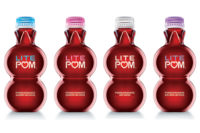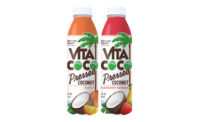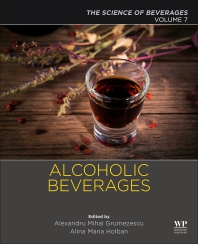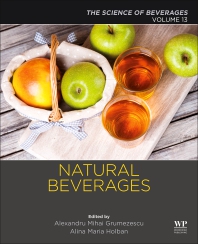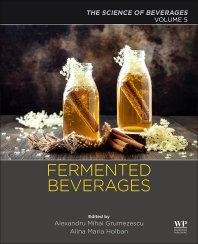Performance beverages expand beyond fitness
Ingredient solutions support consumers’ everyday performance needs

Image courtesy of wundervisuals/E+ via Getty Images
In the classic arcade game Pac-Man, players would consume power pellets in order to turn the ghosts blue, signifying that Pac-Man could “eat” the ghosts instead of having to avoid them. For today’s consumers, performance beverages are delivering the “power pellets” to meet their fitness goals versus take on fictional ghosts.
Yet, experts note that today’s performance beverages have evolved beyond providing energy, also supporting broader health and wellness goals.
“In the recent past, energy drinks were about packing more ingredients ― mostly stimulants ― into a formulation,” says Steve Fink, vice president of marketing at PLT Health Solutions, Morristown, N.J. “The active/energy ingredient was primarily caffeine and products were differentiated based primarily on flavor and delivery experience.
As the market matures, consumers are looking for a broader range of energy experiences ― and ones that don’t come with the negative effects of overstimulation.
“As the market matures, consumers are looking for a broader range of energy experiences ― and ones that don’t come with the negative effects of overstimulation,” he continues. “Non-stimulant energy has become increasingly attractive to consumers, particularly when it is plant-based. In the caffeine space, extended and delayed release forms of caffeine are increasingly utilized to reduce the unpleasant effects of instant release caffeine.”
Micah Greenhill, senior marketing director of beverages at ADM, elaborates that performance beverages are delivering on multi-functional levels to consumers.
“More and more consumers are leading active lifestyles, looking to stay fit and active as late into life as possible,” Greenhill says. “The effect this is having on the performance beverage market is significant. Across generations, these active consumers are looking for beverages that offer functional ingredients, such as electrolytes and added protein, or cognitive and digestion support.
“In fact, one of the most sought-after functional attributes in beverages is rehydration, with 78% of Gen Zers, 81% of millennials and 74% of Gen Xers citing hydration as one of the most important functional benefits for which they look,” he continues, citing Mintel’s 2023 “Functional Drinks – US” report. “This has led to the growth of rapid rehydration beverages and electrolytes being added to a wide variety of beverage categories, including energy drinks and seltzers.”
Bret Barhoover, category marketing manager for specialized nutrition at Cargill, Minneapolis, explains that as health and wellness has taken center stage for a host of consumers, it has taken the performance beverage market mainstream.
“Protein-packed recovery shakes and hydration beverages line store shelves, promising to not just quench thirst but also support consumers’ health, nutrition and active lifestyle goals,” he says. “There are still high-performance athletes looking for an edge, but there are also weekend warriors and consumers who just want to lean into wellness. The finished products for these two very different groups might be comprised of similar ingredients ― but how they are marketed and the nuances in their formulations allow for differentiation.”
Laura Harper, marketing associate at Imbibe, Niles, Ill., meanwhile details that performance beverages are not just meant for fitness performance, but daily performance.
“Performance beverages have evolved beyond just supporting fitness routines and athletic activities and have become multifunctional,” she says. “Today, consumers seek out drinks that enhance their daily lives and overall well-being. Whether for hydration, energy, focus, stress relief, sleep, immunity, weight management, or sexual health, people are looking for ways to optimize their performance in all aspects of life.”

Sweet protein solutions
As consumers expect performance beverages to fill a variety of need states, experts highlight how this has impacted the ingredients that formulators are turning to for future beverages.
“Some of the biggest trends in recent years in sports nutrition products are around responding to demand for personalized formulations, for more natural, clean label ingredients and for plant-based and vegan options,” says Kyle Krause, BENEO regional product manager of functional fibers and carbohydrates for North America at BENEO, Parsippany, N.J. “Plant-based proteins are also gaining appeal in sports nutrition, as consumers look to reduce their intake of animal ingredients. Alongside these trends are convenience and on-the-go formats that meet the demands of busy lifestyles, while claims related to boosting energy levels are highly appealing to consumers seeking to feel fit and active.”
Cargill’s Barhoover also highlights the impact that protein is having on performance beverages.
“Our latest ClaimTracker study, which assesses the purchase impact of nearly 80 on-pack claims, found that within the health/nutrition beverages and powders segments, ‘good source of protein’ remained the most impactful claim,” he says. “That, in itself, was no surprise. Consumers have tried to add more protein to their diet for years and sales of protein-packed beverages are on a corresponding climb.
“New to the conversation, however, is a more complete understanding of the claim’s true purchase impact,” Barhoover continues. “The Cargill research finds a standalone ‘good source of protein’ claim reaches roughly two-thirds of consumers ― and nearly the same percentage report a willingness to pay 10% more for a beverage or powder carrying a protein claim.”
Barhoover also calls attention to the growing number of consumers who are gravitating toward plant-based proteins.
“Cargill and joint-venture partner PURIS help brands tap into this segment with a line of pea protein ingredients developed specifically for [ready-to-drink] (RTD) beverages and powder applications,” he explains. “They feature enhanced solubility and a neutral flavor profile, enabling brands to deliver 10, 20 or even 30 or more grams of protein per serving and still create great-tasting, creamy and indulgent products.”
Yet, the spotlight on protein is not without supporting ingredients to deliver on taste and mouthfeel.
“You’ll need ingredients like emulsifiers to maintain stability and suspend proteins in a beverage, and high-intensity sweeteners to make these nutrient-dense formulations taste great, without adding extra calories and sugar,” Barhoover says. “To meet consumers’ sweetener claim expectations, Cargill offers a portfolio of zero-calorie, stevia-based sweeteners.
“The most advanced system, EverSweet stevia sweetener + ClearFlo natural flavor, is a good fit for many performance beverages and powders,” he continues. “It combines a great sweetness foundation with flavor-modifying properties, helping to mask the bitterness, metallic notes and similar attributes often associated with other ingredients in the formula. At the same time, EverSweet + ClearFlo can enhance common characterizing flavors like fruity notes and chocolatey flavors.”
BENEO’s Krause meanwhile touts the company’s Palatinose, an isomaltulose sweetner solution, for its global usage in the performance beverage market.
“Naturally derived from sugar beet and found in honey, it delivers a rounded sweet taste, about half as sweet as sucrose, and leaves no aftertaste,” Krause says. “Sensorial trials have shown that this alternative sugar positively affects the organoleptic profile of a drink. Glucose is the main fuel for body and brain, and Palatinose, being made of glucose and fructose, provides glucose in a low glycemic way.
“Due to releasing glucose more slowly, Palatinose provides its full carbohydrate energy (4 calories/gram) over longer periods of time, resulting in sustained energy,” he continues. “Since there’s a slow release of glucose from Palatinos the body releases a reduced amount of insulin. Lower insulin levels allow for a higher rate of fat burning, instead of carbohydrate burning, boosting energy supply within the body. Athletes aim for higher fat-burning rates as a means to improve endurance (e.g., as a training effect, to spare limited carbohydrate sources (glycogen) for endurance).”

Expanding on performance
Beyond the growing presence of protein in performance beverages, experts detail the diverse sect of ingredients and attributes formulators have at their disposal.
“Electrolytes for rapid rehydration are extremely popular right now, supporting aspects of endurance such as replenishing body fluids,” ADM’s Greenhill says. “B6 and B12 vitamins, niacin, magnesium, choline, l-carnitine and caffeine from a natural source, including our guarana, green tea and yerba mate extracts, are perceived by many to add additional benefits that help drive them through the day with more energy, focus and a better mood. Plus, protein, which supports muscle growth for optimal performance, is being added to everything from waters to energy drinks.”
Given all these ingredients and attributes, Greenhill notes that it can be a challenge as how to categorize a finished beverage.
“Is a rapid rehydration water with added protein and L-theanine for mood support a performance beverage, a functional beverage or a water?,” he questions. “Energy drinks have had a reputation for deleterious effects by some consumers, but as more functional ingredients find their way into the category and with many energy-like drinks now boasting cleaner labels, the perception of them is shifting.”
John Higgs, associate principal scientist at Imbibe, further details interest in more balanced versus stimulant sources.
“Consumers seek ‘no jitters’ and less ‘excessive excitability’ in beverages with high caffeine levels,” he says. “To mitigate this, brands are adding theanine (as L-theanine), an amino acid frequently used to treat anxiety. Of course, we see a lot of beverages with lower sugar/calorie content that still provide the mouthfeel and sweetness of real sugar through non-caloric sweeteners/flavor modulators.”
Additionally, Dana Chen, principal flavorist and head of flavor at Imbibe, touts the proliferation of floral and herbal ingredients within performance beverages.
“The industry is seeing the incorporation of herbs or florals that can affect mood like calming lavender and invigorating eucalyptus or peppermint in combination with fruit flavors,” she says. “Some typical ingredients range from hemp or ashwagandha for tranquility and calm to ginseng for energy and invigoration.”
As beverage-makers look to incorporate ingredients that support a performance beverage concept, suppliers also highlight the importance of working with solutions that are water soluble.
“PLT offers a number of ingredients for beverages that fit into the active/sports nutrition category,” PLT’s Fink says. “Each of these has been re-engineered to make them beverage-friendly. In addition, these ingredients offer formulator-friendly features. They are low dosage, fast-acting, water-soluble/dispersible, taste and color neutral and having clinically demonstrated benefits.”
Among those offerings is a water-soluble version of its adaptogen Rhodiolife, a branded form of Rhodiola rosea.
“The beverage use occasions for Rhodiola are incredibly broad,” Fink says “We are seeing Rhodiolife included in de-stress beverages, in beverages designed to combat mental fatigue and in other products designed to promote balance and an improved mood. And let’s not forget physical stress. Rhodiolife has been clinically demonstrated to reduce physical stress and improve stamina.”
And earlier this year, PLT introduced a water-soluble formulation of its Zynamite to the North American market: Zynamite S.
“The ingredient that has been the subject of 10 clinical studies and won seven industry awards has been shown to be fast-acting and experiential, offering enhanced mental energy, improved workouts and recovery, targeting both brain and body,” Fink says. “It offers a unique set of benefits for cognitive and active/sports nutrition.”
Yet, with so much already at beverage-makers disposal, experts anticipate performance beverages will find more ways to develop products that meet consumers’ host of health needs.
Jason Dompeling, senior manager of product development at Imbibe, highlights the impact of broader environmental trends as well as more targeted attributes.
“We see new trends including an ongoing shift toward plant-based protein beverages as consumers focus on environmental sustainability and health, consumer interest in mental focus and acuity through functional ingredients, energy through various forms of natural caffeine (green tea/coffee bean, guayusa, yerba mate, guarana), and the addition of Biotin (vitamin B7) across all functional beverages for healthy hair, skin, nails, and nervous system performance,” he says.
Meanwhile, ADM’s Greenhill anticipates individualized approaches will have a growing effect on the segment.
“There is enormous ongoing potential for performance beverages,” he says. “One aspect of this market is how tailored the solutions need to be to meet consumer demand. We’re all coming to understand how individual our health and wellness concerns are.
“One of the largest areas of immediate opportunity is around the gut microbiome,” he continues. “As that body of research grows, there will be undoubtedly avenues for new beneficial features that target specific areas of wellness and meet consumers’ unique needs. There is already a wide variety of performance beverages, functional beverages, waters and energy drinks; and the landscape stands to only expand.”
Looking for a reprint of this article?
From high-res PDFs to custom plaques, order your copy today!





